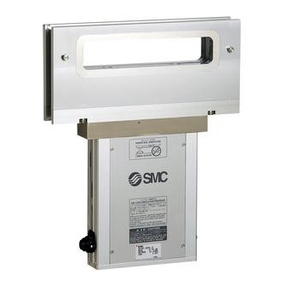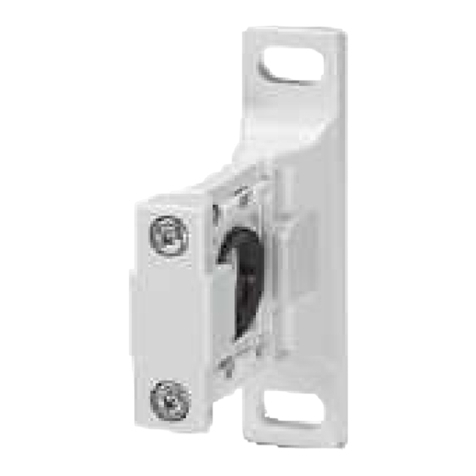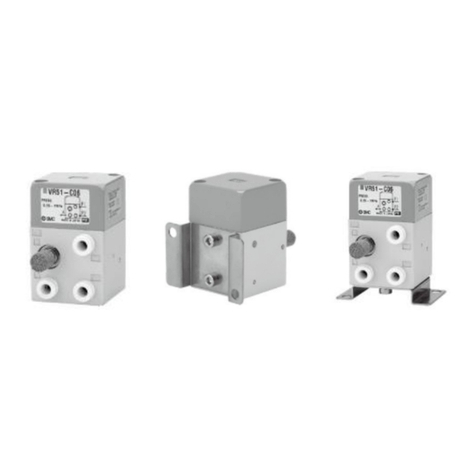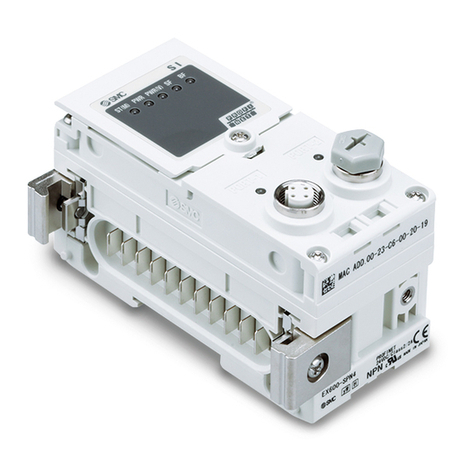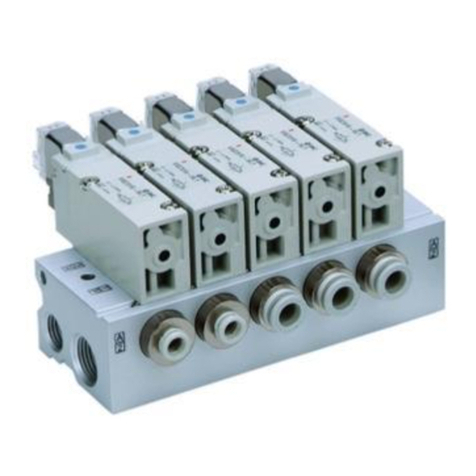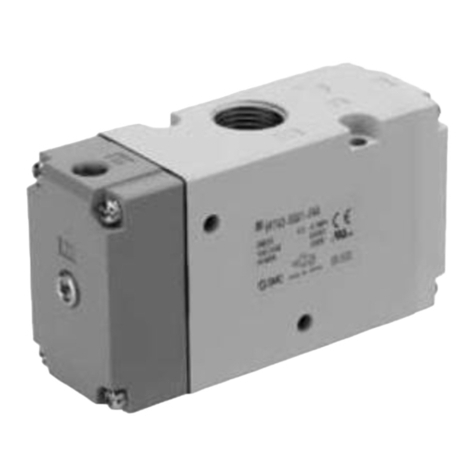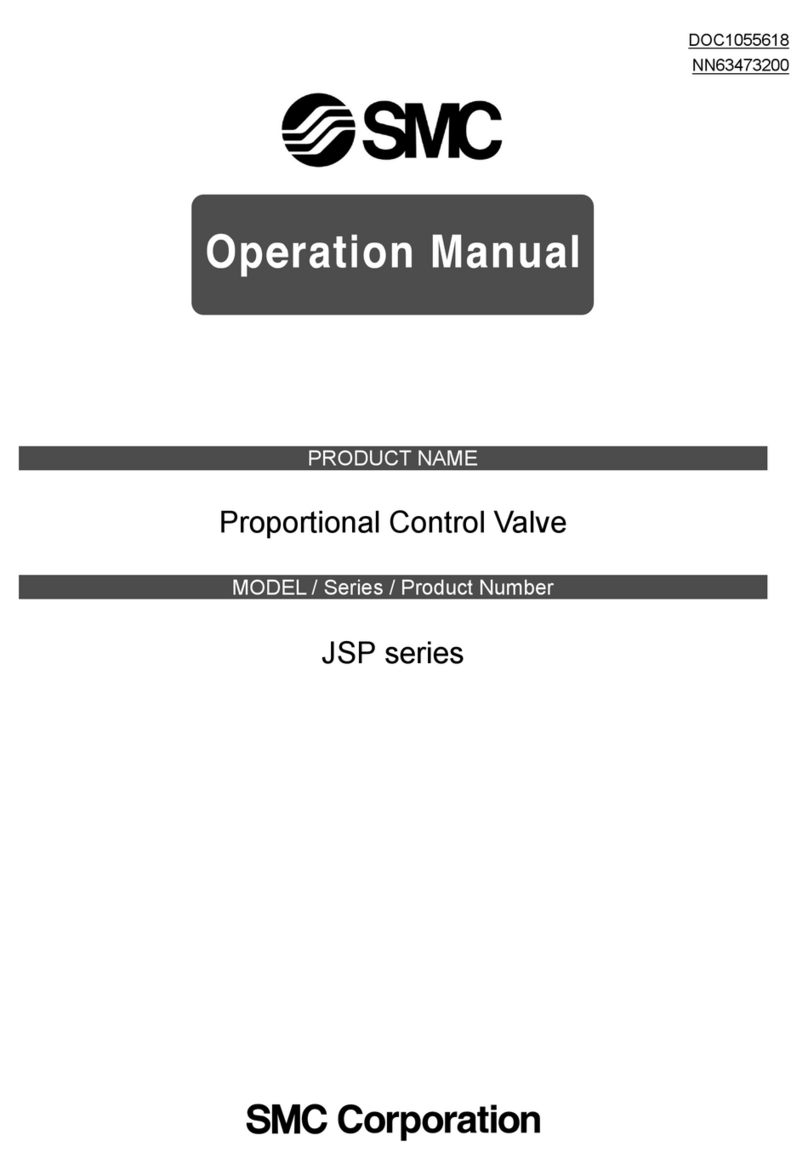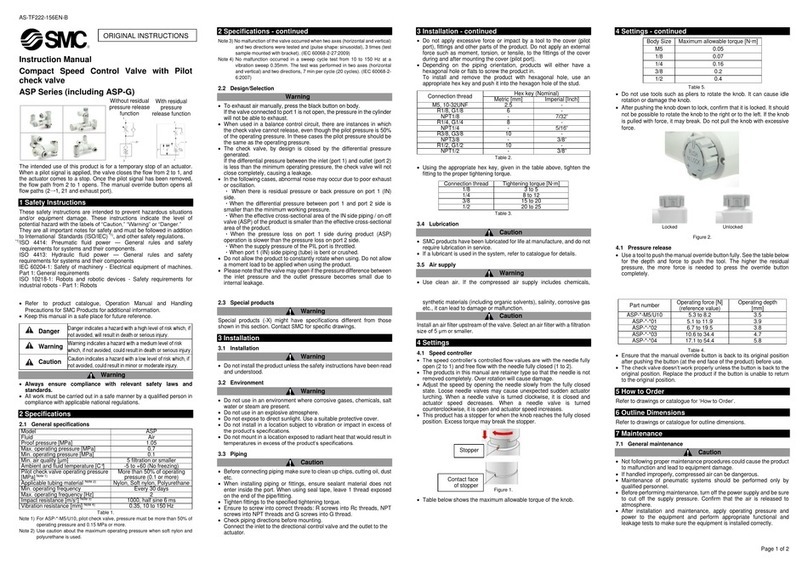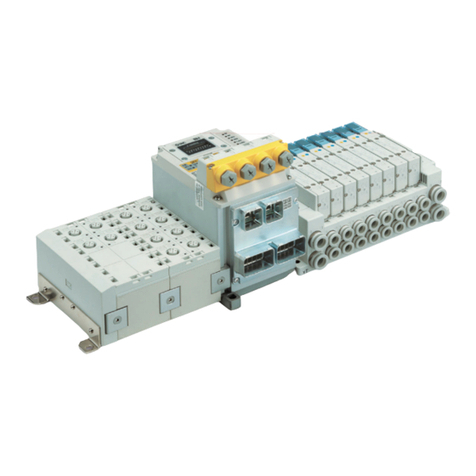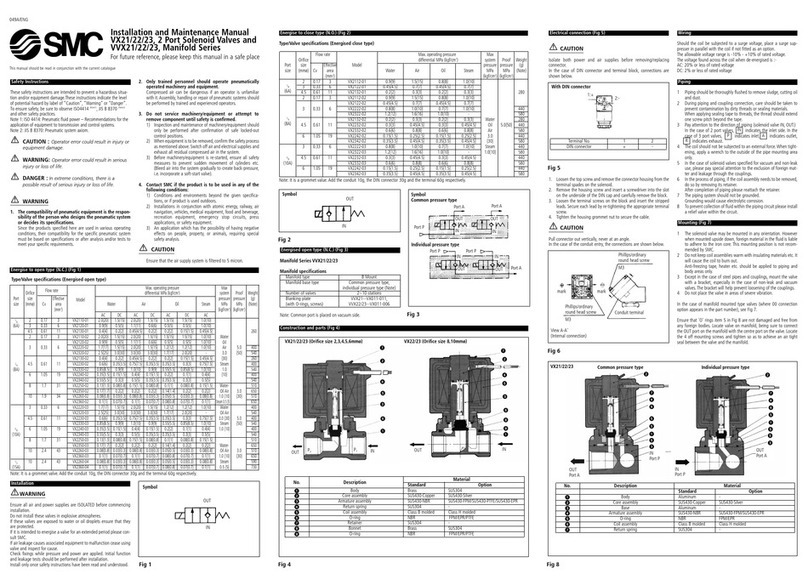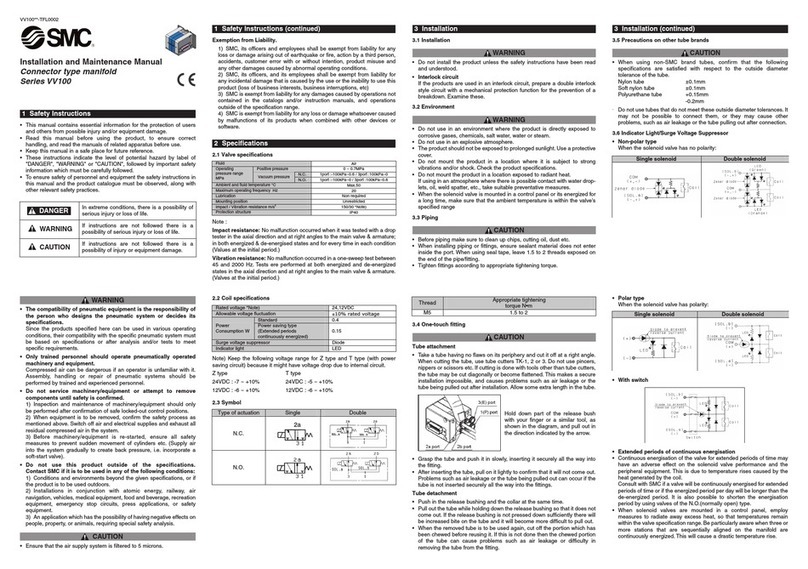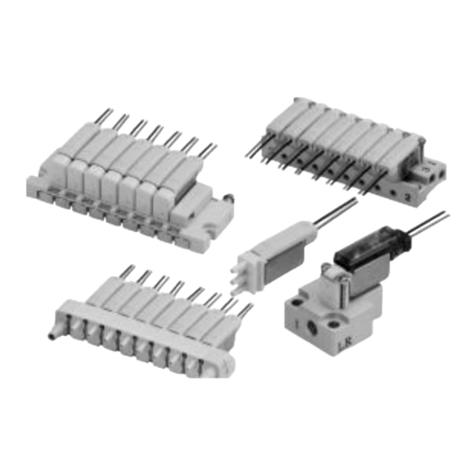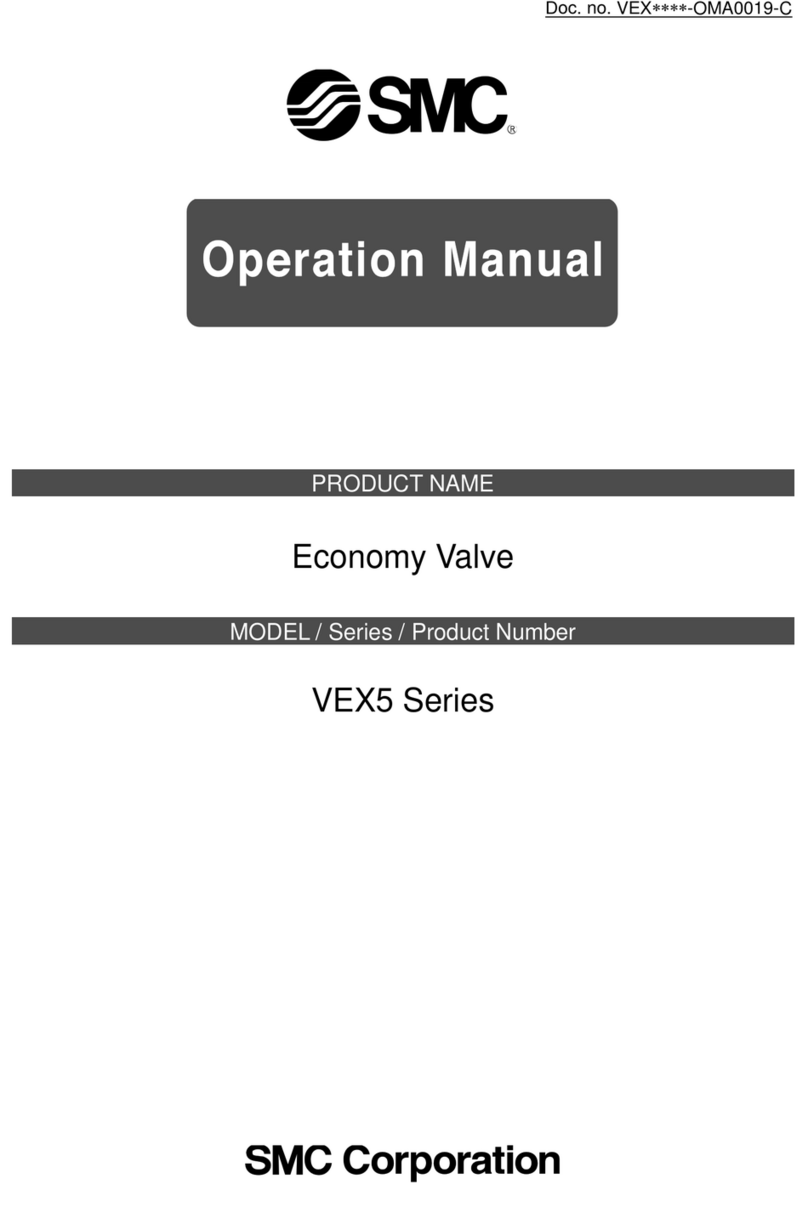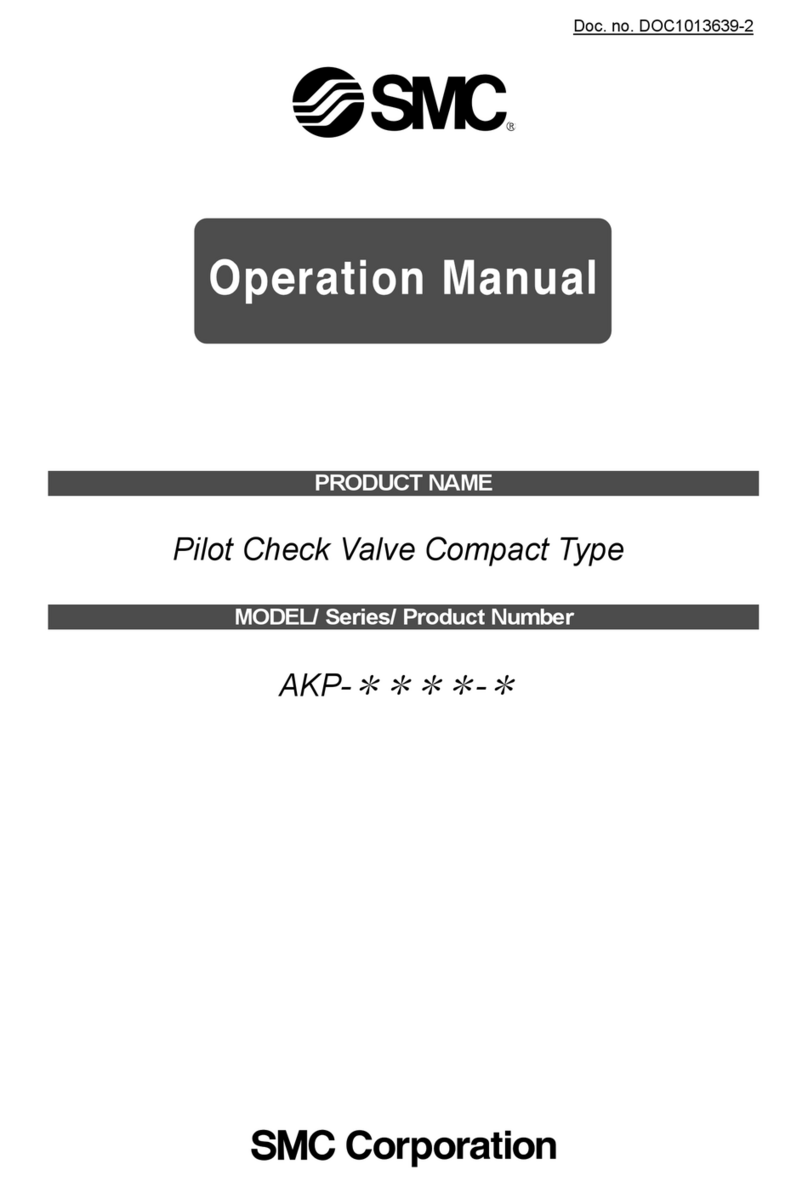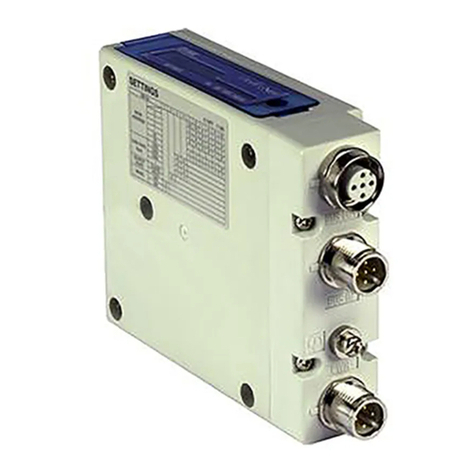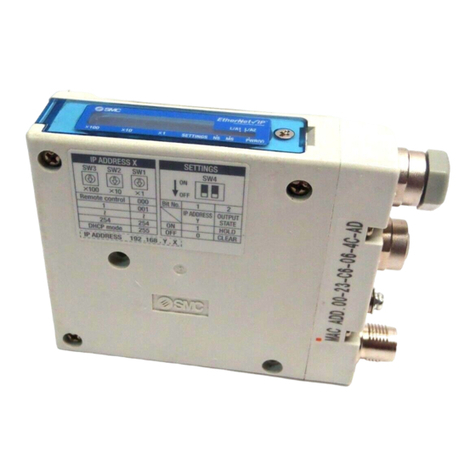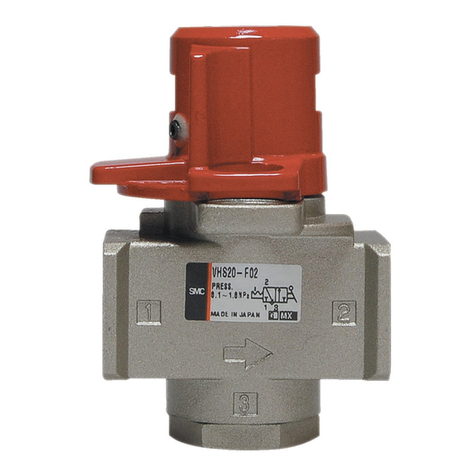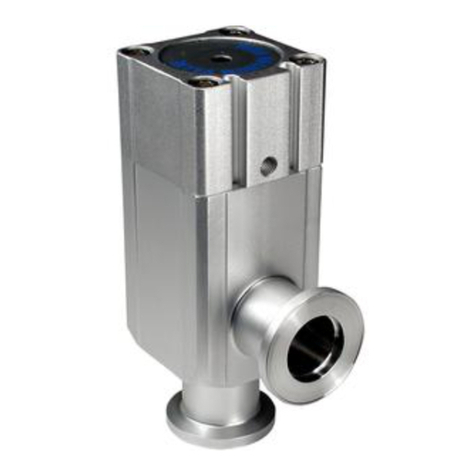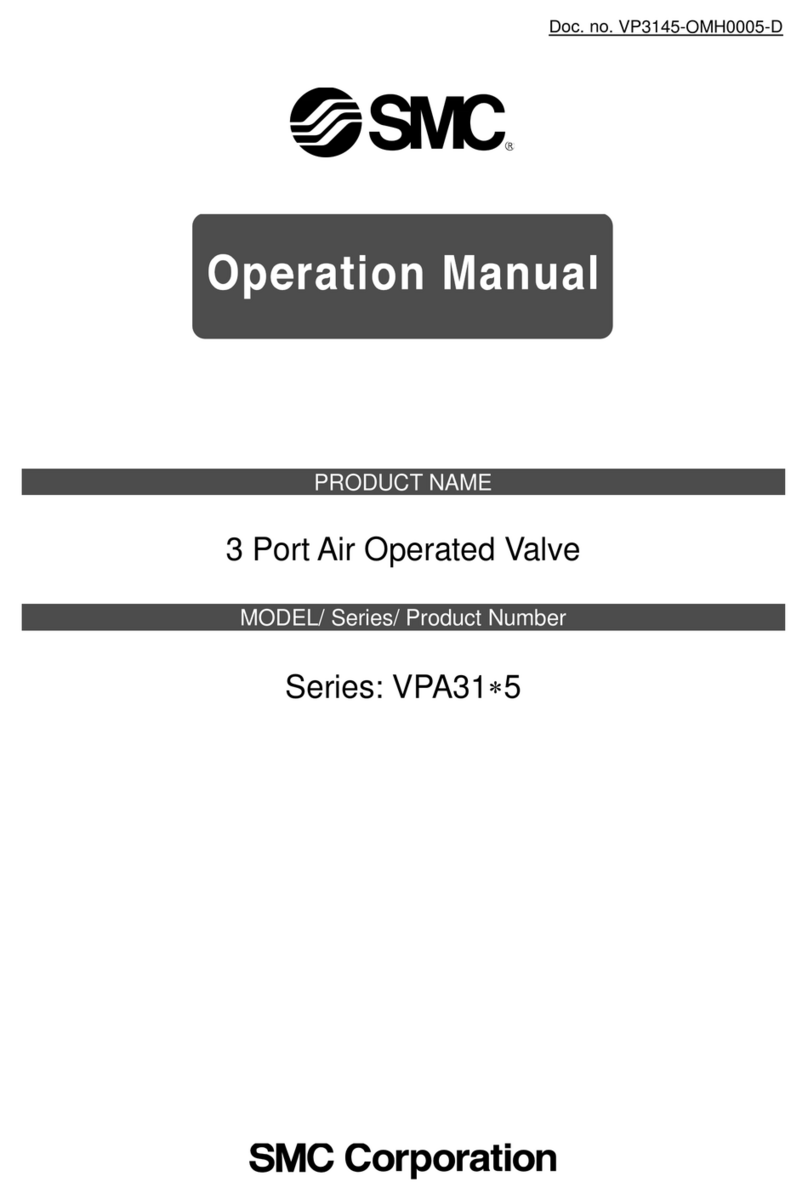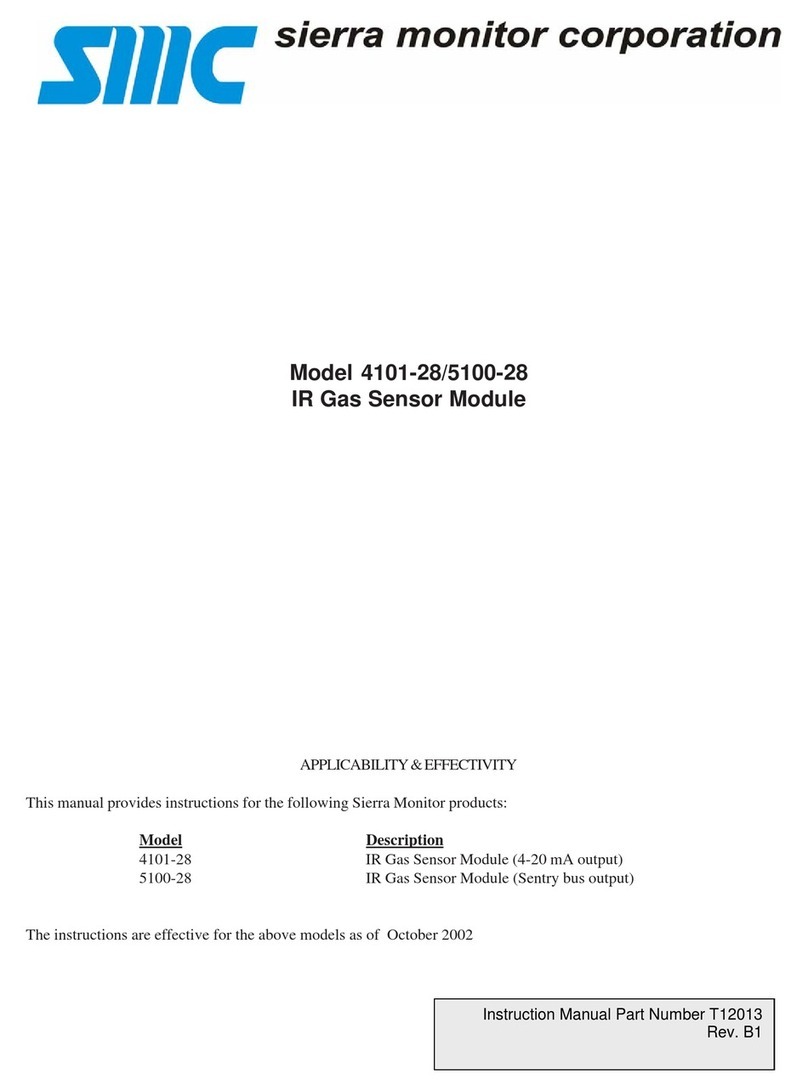1. Confirm the specifications
Products represented in this instruction manual are designed
only for use in compressed air systems ( including vacuum).
Do not operate at pressures or temperatures, etc., beyond the
range of specifications, as this can cause damage or
malfunction.
We do not guarantee against any damage if the product is used
outside of the specification range.
2. Actuator drive
When an actuator, such as a cylinder, is to be driven using a
valve, take appropriate measures (such as the installation of a
cover or the restricting of access to the product) to prevent
potential danger caused by actuator operation.
3. Intermediate stops
For 3-position closed center, it is difficult to make a piston stop at
the required position accurately due to the compressibility of air.
Furthermore, since valves and cylinders are not guaranteed for
zero air leakage, it may not be possible to hold a stopped
position for an extended period of time. Please contact SMC if it
is necessary to hold a stopped position for an extended period
of time.
4. Effect of back pressure when using a manifold.
Use caution when valves are used on a manifold because
actuators may malfunction due to back pressure. For 3-position
exhaust center valve of single acting cylinder, take appropriate
measures to prevent the malfunction by using it with an
individual exhaust manifold.
5. Holding pressure (including vacuum).
Since the valve are subject to air leakage, they cannot be used
for applications such as holding pressure (including vacuum) in
a pressure vessel.
6. Not suitable for use as an emergency shut-off
valve, etc.
The valves listed in this instruction manual are not designed for
safety applications such as an emergency shutoff valve. If the
valves are used for the mentioned applications, additional safety
measures should be adopted.
7. Release of residual pressure
For maintenance and inspection purposes install a system for
releasing residual pressure. Especially in the case of
3-position closed center valve, ensure that the residual pressure
between the valve and the cylinder is released.
8. Operation in a vacuum condition
When a valve is used for switching a vacuum, take measures to
install a suction filter or similar to prevent external dust or other
foreign matter from entering inside the valve.
In addition, at the time of vacuum adsorption, be sure to supply
a constant supply of vacuum. Failure to do so may result in
foreign matter sticking to the adsorption pad or air leakage,
causing the workpiece to drop.
9. Regarding a vacuum switch valves and
vacuum release valves
If a non-vacuum valve is installed in the middle of a piping system that
contains a vacuum, the vacuum condition will not be maintained. Use
a valve designed for use under vacuum conditions.
10. Double solenoid type
When using the double solenoid type for the first time, actuators
may travel in an unexpected direction depending on the switching
position of the valve. Implement measures to prevent any danger
from occurring when operating the actuator.
11. Ventilation
Provide ventilation when using a valve in a confined area, such
as in a closed control panel. For example, install a ventilation
opening, etc. in order to prevent pressure from increasing inside
of the confined area and to release the heat generated by the
valve.
12. Extended periods of continuous energization
- If a valve will be continuously energized for an extended period
of time, the temperature of the valve will increase due to the
heat generated by the coil assembly.
This will likely adversely affect the performance of the valve
and any nearby peripheral equipment.
Therefore, if the valve is to be energized for periods of longer
than 30 minutes at a time or if during the hours of operation the
energized period per day is longer than the de-energized period,
we advise using a valve with specifications listed below.
- Pilot operated: A 0.4 W or lower valve, such as the SY/JSY
series, or a valve with a power-saving circuit
- Direct operated: Acontinuous duty type valve such as the VK
series or the VT series If conflicting instructions are given in the
“Specific Product Precautions” or on the “How to Order Valves”
page, give them priority.
13. Do not disassemble the product of make any
modifications, including additional
machining.
Doing so may cause human injury and/or an accident.
14. Resumption after a long period of holding time
When resuming operation after a long period of holding time,
there are cases in which, regardless of whether the product is
in an ON or OFF state, there is a delay in the initial response
time due to adhesion.
Conducting several cycles of running-in operation will solve this
problem. Please consider implementing this before resumption.
1. Precautions for 2-position double solenoid valves
If a double solenoid valve is operated with momentary
energization, it should be energized for at least 0.1 second.
However, depending on the piping conditions, the cylinder may
malfunction even when the double solenoid valve is energized
for 0.1 seconds or longer. In this case, energize the double
solenoid valve until the cylinder is exhausted completely.
2. Leakage voltage
Take note that the leakage voltage
will increase when a resistor is used
in parallel with switching element or a
C-R circuit (surge voltage
suppressor) is used for protecting a
switching device because of the
passing leakage voltage through the
C-R circuit.
The suppressor residual leakage voltage should be as 3% or less
of the rated voltage.
3. Surge voltage suppressor
1) The surge voltage suppressor built into the valve is intended to
protect the output contacts so that the surge generated inside valve
does not adversely affect the output contacts. Therefore, if an
overvoltage or overcurrent is received from an external peripheral
device, the surge voltage protection element inside the valve is
overloaded, causing the element to break. In the worst case, the
breakage causes the electric circuit to enter short-circuit status.
If energizing continues while in this state, a large current flows.
This may cause secondary damage to the output circuit, external
peripheral device, or valve, and may also cause a fire. So, take
appropriate protective measures, such as the installation of an
overcurrent protection circuit in the power supply or a drive circuit to
maintain a sufficient level of safety.
